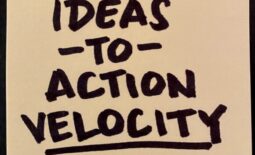I Love This Idea, I Love It Not.
When you come up with an idea it’s pretty easy to think of all the reasons you love it, but you might want to think of the kids game of playing “he loves me, he loves me not” where a petal is pulled off of a daisy while alternating the phrases “he (or she) loves me” and “he loves me not”. The phrase spoken as the final petal is plucked supposedly represents how the object of your affection truly feels about you.
It’s a silly bit of fortune-telling, but the premise of loves me/loves me not can be applied to the affection you have for your own ideas, forcing yourself to evaluate them in a more neutral manner.
Pick a random number by rolling dice or typing the words “random number generator” into the Google search bar. Once you have a number, begin writing down alternating reasons why you love-your-idea and reasons why you love-your-idea-not.
- I love my idea, because it allows me to use a favorite skill
- I love my idea not, because it will cost a lot to get started
- I love my idea, because I think my current clients will buy this new service
- I love my idea not, because it will take up a lot of my free time to develop
- I love my idea, because …
It’s too easy to love your own idea
I mean, it’s your idea. It’s like having a child — you’re gonna love it because it’s yours. But your love can blind yourself to the flaws in your plan — preventable flaws which could be avoided if dealt with at the early stages of development.
It’s also too easy to be critical of your own idea
Some people have the opposite problem; they think because they came up with an idea it can’t possibly be any good. They tell themselves that if the idea were any good someone else would have come up with it by now. All they see are the flaws and they’ve blinded themselves to the potential for its success.
Once you’ve completed the random number of Love-It and Loves-It-Nots, you can either stop and weigh your pros and cons about moving forward or shelving the idea — or you can keep the momentum going and continue making your list of Loves-It / Loves-It-Nots until you’ve written down every pro and con you can think of and then make your decision.
Playing I Love It / I Love It Not pushes you to not only see both the potential and the flaws of your ideas, but to flip back and forth between them to avoid making a knee-jerk reaction in one direction or the other.



